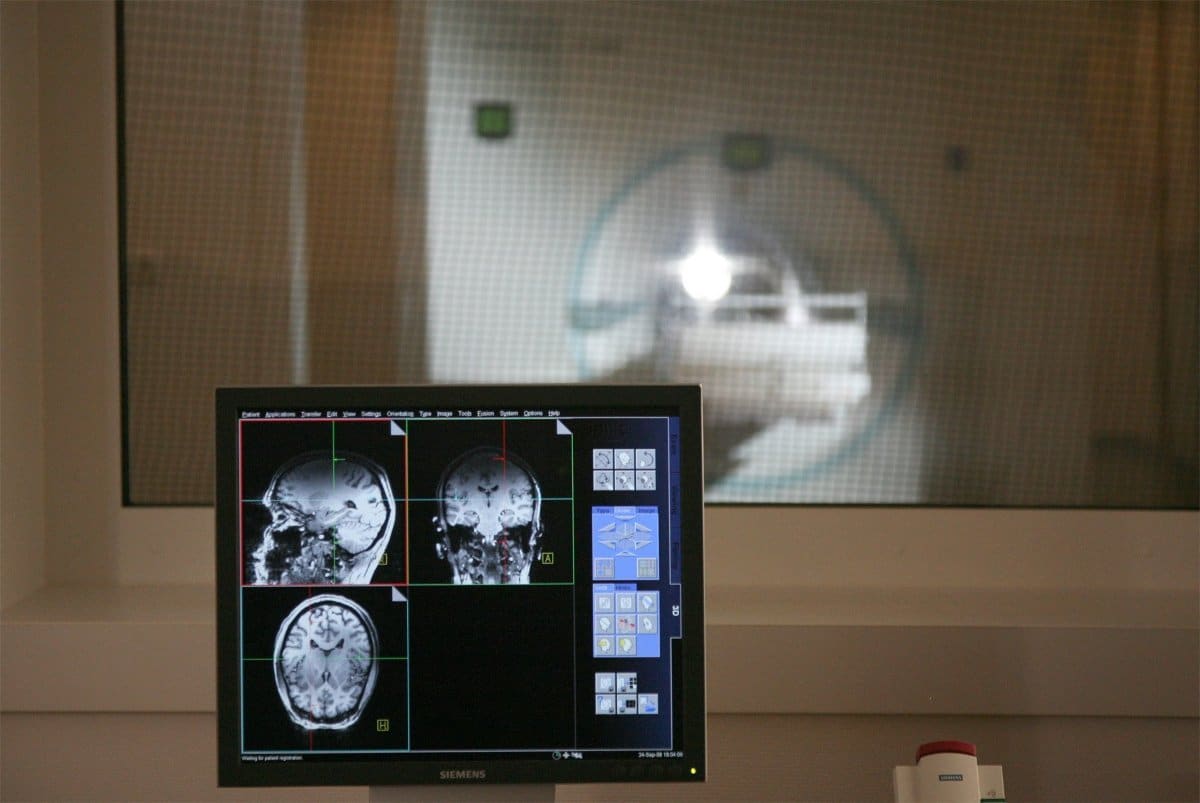Summary: A new MRI imaging technique has been developed by a research team at MedUni Vienna that can map brain glucose metabolism without the use of radioactive substances. The non-invasive procedure uses a harmless glucose solution and can be used with common MRI scanners, offering reliable results for diagnosing metabolic disorders.
Source: Medical University of Vienna
Metabolic disorders play a central role in many common conditions, including Alzheimer’s, depression, diabetes and cancer, which call for reliable as well as non-invasive diagnostic procedures. Until now, radioactive substances have been administered as part of the process of mapping glucose metabolism in the brain.
Now, a MedUni Vienna research team has developed a completely new magnetic resonance imaging (MRI) approach. Using a harmless glucose solution, the procedure generates reliable results and—in principle—can be used with all common MRI scanners.
The findings from the study have just been published in the journal Nature Biomedical Engineering.
The study looked at—and has significantly enhanced—current diagnostic procedures for mapping brain glucose metabolism. The results were generated by measuring blood glucose levels and metabolic products in healthy subjects several times during a period of around 90 minutes.
In contrast to existing procedures, the subjects did not receive radio-labeled glucose but a quantity of a harmless glucose solution equivalent to a can of a fizzy drink. As this substance does not produce a direct signal for the MR imaging method used, concentrations and metabolism of glucose were measured indirectly based on the drop in signal intensity for the product concerned.
“The main advantage of this indirect method is that it can be used on other MR devices without any difficulties, because no additional hardware components are required, as is the case with other, comparable approaches,” explained principal investigator Wolfgang Bogner of the Department of Biomedical Imaging and Image-guided Therapy at MedUni Vienna, highlighting the clinical significance of the research findings.
Broad range of potential applications
Carried out by researchers from the Department of Psychiatry and Psychotherapy and Department of Medicine III at MedUni Vienna, the study used the university’s high-performance 7-Tesla MRI scanner. The device began operation in 2008 and is still the only ultra-high-field MR scanner available in Austria. Wolfgang Bogner and his team have already demonstrated that the novel approach also works on 3-Tesla MR scanners.

“That was an important step, because 3T MR systems are extremely widespread in clinical applications,” said Fabian Niess, lead author of a follow-up study published in Investigative Radiology.
Further studies needed to confirm results
Abnormalities in glucose metabolism are a feature of many common diseases. It is already known that cancer and tumor cells consume far greater amounts of glucose than normal cells—an effect that physicians can capitalize on when diagnosing and localizing tumors.
At present, this is done by means of positron emission tomography in combination with computed tomography (PET-CT), where patients have to be injected with a small amount of radioactive glucose. However, the findings will have to be verified in further studies before the new, less-invasive method developed at MedUni Vienna can be deployed for the benefit of patients.
About this neuroimaging research news
Author: Press Office
Source: Medical University of Vienna
Contact: Press Office – Medical University of Vienna
Image: The image is credited to Medical University of Vienna
Original Research: Closed access.
“1H magnetic resonance spectroscopic imaging of deuterated glucose and of neurotransmitter metabolism at 7 T in the human brain” by Petr Bednarik et al. Nature Biomedical Engineering
Abstract
1H magnetic resonance spectroscopic imaging of deuterated glucose and of neurotransmitter metabolism at 7 T in the human brain
Impaired glucose metabolism in the brain has been linked to several neurological disorders. Positron emission tomography and carbon-13 magnetic resonance spectroscopic imaging (MRSI) can be used to quantify the metabolism of glucose, but these methods involve exposure to radiation, cannot quantify downstream metabolism, or have poor spatial resolution.
Deuterium MRSI (2H-MRSI) is a non-invasive and safe alternative for the quantification of the metabolism of 2H-labelled substrates such as glucose and their downstream metabolic products, yet it can only measure a limited number of deuterated compounds and requires specialized hardware.
Here we show that proton MRSI (1H-MRSI) at 7 T has higher sensitivity, chemical specificity and spatiotemporal resolution than 2H-MRSI.
We used 1H-MRSI in five volunteers to differentiate glutamate, glutamine, γ-aminobutyric acid and glucose deuterated at specific molecular positions, and to simultaneously map deuterated and non-deuterated metabolites. 1H-MRSI, which is amenable to clinically available magnetic-resonance hardware, may facilitate the study of glucose metabolism in the brain and its potential roles in neurological disorders.






